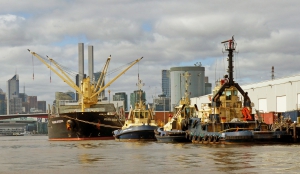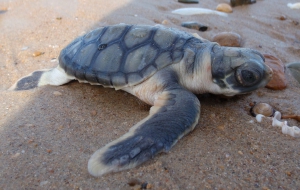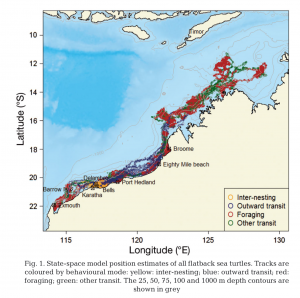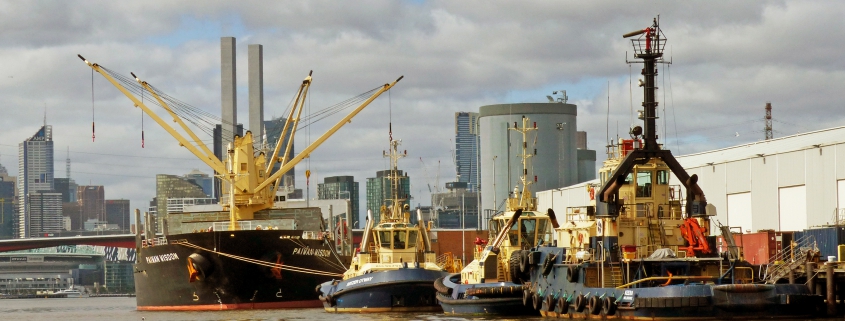Ups and Downs of habitat use: Horizontal and vertical movement behaviour of flatback turtles and spatial overlap with industrial development
By Sydney Steel, SRC intern
The most effective species conservation strategies extend beyond protection of key breeding grounds and nesting sites, and instead considers geographic range over the species’ entire life cycle. Many conservation efforts for endangered species are focused on these key sites due to the locations’ prospect of containing a condensed amount of individuals at one time, however most of the animal’s life is spent elsewhere in lesser-protected zones – presenting a need for increased studies about the overlap of habitat and potential anthropogenic threats.

Shipping ports pose as threats to marine life inhabiting nearby areas due to increased boat traffic, acoustic pollution, and risk of oil spills. (https://commons.wikimedia.org/wiki/File:Shipping_Port_of_Melbourne_Aust._(27465632031).jpg)
A 2018 study conducted by Michele Thums and colleagues focuses on a species relatively deficient in data: the flatback turtle (Natator depressus). Flatback turtles are unique because they live their entire lives on the unprotected continental shelf, where their habitat overlaps with industrial hazards including offshore gas fields, ship-loading facilities, and increased vessel traffic.

Flatback Turtle Hatchling (https://commons.wikimedia.org/wiki/File:Flatback_hatchling.jpg)
Thums, et al. harnessed satellite transmitters to 35 adult female turtles in the Australian marine areas of Bells Beach (nesting) and Delambre Island (breeding) near the Cape Lambert port and shipping channel over three winter nesting seasons between 2010 and 2013. The objective was to gain understanding of the traveled distances, general locations, and time frames associated with turtle behavioral modes. Three varieties of satellite transmitters regularly relayed spatial and temporal data to the ARGOs network, and the CTD-SRDL tag additionally reported conductivity, water temperature, pressure, and dive depth.

Position estimates of all flatback sea turtles tracked near the Cape Lambert port between 2010 and 2013 (Thums, et al 2018).
After completion of satellite recordings, the team analyzed data to account for position errors, and to provide an estimation of the turtle’s behavioral mode at each location. Behavioral modes included resident (inter-nesting and foraging) and transient (outward and other) modes and 50-95% utilization zones were determined for each mode.
On average, the flatback turtles spent 75% of their time in foraging mode, 12% inter-nesting, 8% outward transit, and 5% in other transit. The median range of these turtles (with all behavioral modes combined) was 295 km2, suggesting that the turtles traveled far distances between nesting sites and foraging areas. After overlaying each behavior’s geographic zone with the Cape Lambert Shipping Channel, it was found that turtles who migrated farthest had ranges that overlapped with the port and shipping channel – including an area that has been marked for construction of a wharf. 94% of turtles in inter-nesting and 26% of turtles in outward transit passed through the channel, highlighting that turtles in these modes may be more threatened by anthropogenic activity than turtles who are breeding at Delambre Island or nesting at Bells Beach. Conclusions of this study hint that flatback turtle conservation efforts should be established in migratory zones found to overlap with anthropogenic threats, rather than simply focusing on high-density areas like nesting and breeding grounds.
References
Thums, M., Rossendell, J., Guinea, M., & Ferreira, L. C. (2018). Horizontal and vertical movement behaviour of flatback turtles and spatial overlap with industrial development. Marine Ecology Progress Series, 602, 237-253.



